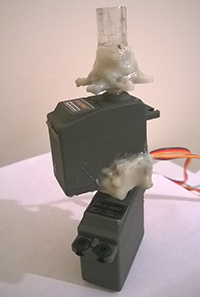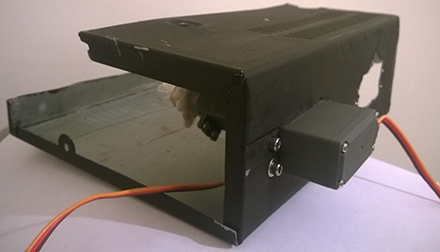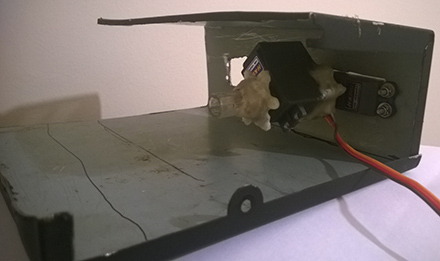Temperature Controls Final Solution
March 24th, 2015The new servos had arrived so now I could try and get this part of the project finished at last. This method was a bit trickier to implement because it involved attaching two servos together. The second servo is needed to turn the first servo that extra 70 degrees. The image to the right shows both servos glued together. A frame also had to be made to mount the rear servo onto. The images below shows the frame with the two servos bolted on.



With the servos now secured on the frame, the control mechanism could now be set in place. Now that the mechanical side was almost complete I tested the controls using the UI. When the Arduino starts up it reads the temperature inside the car using the temperature sensor attached to it. For example, if the driver sets the desired temperature to 26 degrees but the temperature inside the car is only 19 degrees then the temperature setting control will begin turning from cold to hot and the fan speed will be set to full speed. When the temperature comes within 3 degrees of difference the fan speed will then decrease and when the temperature inside the car overshoots the desired temperature the temperature setting control will the begin turning from hot to cold. This will repeat until the inside temperature comes to within 1 degree and by that stage the temperature setting control should be set in the correct location.




























